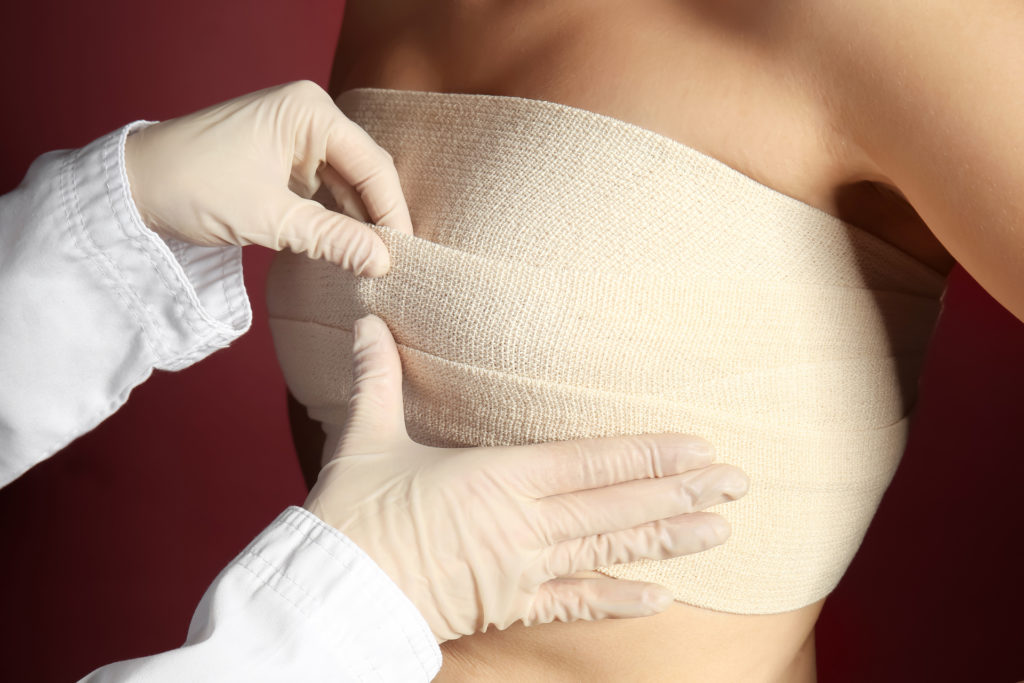FAQs

How do I know which incision placement to choose?
It depends upon the elasticity and relaxation of the skin – how much sagging there is and the position of the nipple. The lower the nipple, the more likely you are to need a lift. The breast lift procedure tightens the skin and reshapes the breast to give a more firm and “perky” appearance. This may give you the ability to wear tops and dresses without a bra and not look flat or “droopy.” If your nipple is positioned in the middle of your breast, you probably will not need a lift.

How will I know what size I should ask for?
There are several things we do at The Gillian Institute to help ensure that we understand your goals and that you know what size to ask for. During your consultation Dr. Short will take breast measurements that help to determine the appropriate range of implant size for you based on your chest and breast diameters. At your consultation you will view some of our “before and after” pictures to help you get a better idea of what different implant sizes look like. You may want to look in bathing suit or lingerie catalogs or magazines before your consultation to select an example of your preferred end result and bring these pictures with you. Also, during surgery, Dr. Short uses sizers, which are similar to implants, to make sure that the size you have chosen will look good on you. Dr. Short will sit you up to be sure the implants will look good in an upright posture and that they are in optimum position. All of these measures help us to meet your expectations.
Will I lose nipple sensation after having breast augmentation?
Some change in nipple sensation after surgery is not unusual. This change in sensation is related to swelling that the patient experiences following the surgery. Patients may experience increased sensitivity, decreased sensitivity, or have no change in sensitivity in the nipple area. After several months most patients return to having normal nipple sensation; however, partial or permanent loss of nipple sensation may occasionally occur.
What are high profile implants? And who should have them?
For patients who have a narrow chest diameter but want increased projection, high profile implants can provide the desired effect with a smaller implant diameter. Dr. Short will determine whether or not you are a candidate for the high profile implants when taking your breast and chest measurements during your consultation and also while in the operating room using the sizers to verify that the implant is appropriate for your anatomy.
What is the difference between saline and silicone implants?
Saline implants are filled with a “Normal Saline” solution which is basically sterilized water with added sodium chloride (salt). Should the implant rupture or leak, this saline solution, just like water, would be absorbed completely by your body. Silicone implants are filled with a silicone gel and are currently utilized only under guidelines set by the FDA as part of a long term study of their safety. These silicone implants are only available for those individuals who meet the study requirements and are typically used for reconstructive purposes.
How do I know which incision placement to choose?
The three most common incision placements are periareolar (partially around the nipple), transaxillary (in the armpit), and in the inframammary crease (under the breast). Incision placement is dependent upon your anatomy and personal preference. For those individuals who are considering the periareolar incision it is important that their areolas are not too small. A small areola requires making the incision more than half way around the nipple and causes too much constriction to the nipple, possibly resulting in a thicker or wider scar. Because the transaxillary incision is further from the breast than the other incisions, it requires much more accuracy and dissection to place the implants. Because of this, Dr. Short prefers not to place the anatomical (tear-drop) shaped implants with this incision as there is a greater risk for those implants to turn during insertion and become incorrectly positioned. Most patients are candidates for the inframammary crease incision, and this does tend to be the most popular incision placement with Dr. Short’s patients. At your consultation Dr. Short will discuss with you the advantages and disadvantages to each incision placement and any limitations you may have with your breast anatomy so that you may decide which incision placement is best for you. Again, it is important that you are involved in the decision process.
Do the implants need to be replaced after a number of years?
With the implants being used currently, there is no recommendation that the implants be replaced after a certain amount of time and it is not necessary to replace the implants unless you are experiencing a problem. Should you have a complication with the implant, it is usually obvious and you will know that it needs to be replaced. The silicone implants from a number of years ago had thinner shells and replacement was recommended after ten years because the incidence of the implant rupturing increased as they got older. That is not true for implants today – saline or silicone. Many patients have their implants for twenty years or more.
Can I breast-feed after having breast augmentation?
Breastfeeding is a concern for many women considering breast augmentation, but the ability to successfully breastfeed is determined by your body and anatomy before the surgery and is unaffected by the breast augmentation surgery. We tell patients that if you could breastfeed prior to the procedure you should be able to breastfeed after the procedure. The placement of implants (above or under the muscle) does not affect your ability to breastfeed, as with either placement the implant is under the breast tissue and glands. Therefore, the “milk ducts” are never in position to be severed or blocked related to the surgery.
How do I know what type of implant is best for me?
Throughout your consultation you will discuss your desires and goals in detail. Dr. Short will go over with you any asymmetries or limitations of your breast anatomy that may affect the implant selection. There are many types of implants which vary in base diameter, projection, and shape. She will help you to determine which implant type will best fit your body and provide you with the best results.
